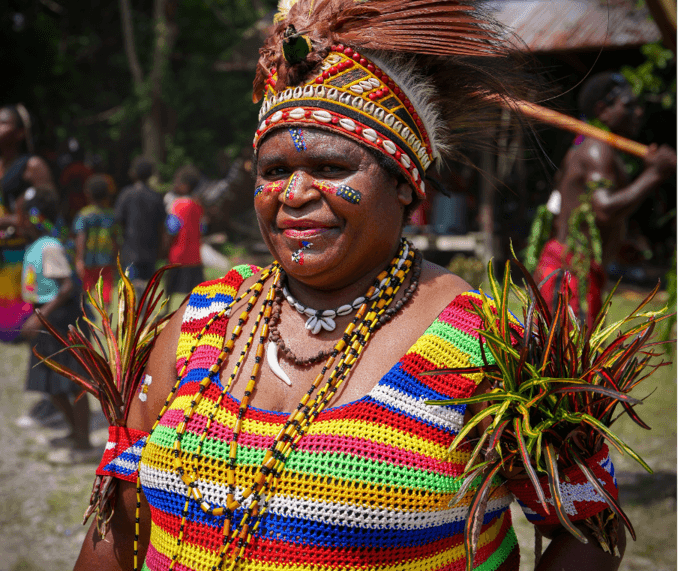Word: Ayu Arman
Come to the Amungme tribe. You’ll be greeted with a festive rite called Pesta Bakar Batu. Dances will accompany the feast, as well as pigs and a variety of yams burnt on hot stones as the main course. This is the time when brotherhood is bonded (again).

Before the miners came along, the Amungme lived for thousands of years in what many call the ‘stone age’. Not only did they use stone for their daily activities such as hunting and cooking, but they also exchanged goods such as axes, salt, shells and pigs.
They live in harmony with nature in the north and south of the Jayawijaya mountains. When night falls, nature becomes very wild. At dawn, their honai is transformed into a large and beautiful house by a garden full of colourful flowers.

Their fields are always full of crops. Some are ripe, some are just growing. Always abundant and ready to be harvested at any time.
Surrounding their hamlet lay mountains from east to west, with their peaks standing perpendicular to the sky. From the mountain peaks, water gushes from fresh, clear pools, between the rocks, forming tributaries and flowing down.

The mountain peaks have sacred value to the Amungme tribe, most of whom live in Freeport’s current mining concession area. The Amungme respect the peaks with great care and believe that their ancestors watched from the heights of the peaks.
At the foot of the mountains are forests where a variety of birds fly in to enjoy the beautiful dawn. Kuskus sunbathe along the branches of the trees. Looking south, they see a vast land that they cannot see where it ends.
This land area is where the Amungme people hunt, gather, grow crops and raise pigs. They sell their crops and livestock to the market.
This is their main cycle of activity: home, field, market. Then, back to the house. The Amungme people’s home, like most Papuans in the mountains, is a round honai with a thatched roof designed to keep warm in the cold mountain climate. For them, the honai is a dwelling zone that symbolises the breast and womb of their mother who has fed them all these years.
This is reflected in the dances and rituals of their daily lives. One of them is the stone-burning ritual inherited from the Amungme ancestors in celebrating a life full of joy for all the blessings given by nature and God in their lives.
Freeport’s presence challenges the Amungme tribe to live in a modern consumer culture. In their land, which has undergone modernisation development, we still found the tradition of stone burning, which is still deeply rooted in their lives.
Stone burning is a legacy of Amungme ancestral cooking that brings a high sense of solidarity, love and empathy. It is a symbol of close relationships between neighbours, togetherness, and gratitude.
At the end of 2024, we attended a stone-burning ritual in Mandiri Jaya village, Timika City. That afternoon, all the Amungme people gathered in the courtyard of a large house with their agricultural products. Tubers, vegetables, chickens and pigs.
The stone-burning ritual begins with a dance. The Amungme men call out loudly to begin the event. Traditional music begins to play, stirring the bodies of women and men, adults and children, dancing on bare feet.
The Amungme men accompany the screeches with their distinctive voices, which create a dynamic rhythm that adds to the lively atmosphere of the bąkar batu party. Their faces are energised, sweaty and happy.
Some of them decorate their faces and body parts with thick white and black chalk. Sago leaves tied with cassowary feathers are coiled above the men’s heads. A few dried sago leaves are tied around the wrists.
The mantras chanted, the distinctive screeching sounds, the body paintings, and the trinkets on their bodies are symbols of the presence of ancestors who always ensure the survival and blessings of every citizen who carries out this tradition.

In the first stage, they make a hole in the ground to resemble a frying pan. The depth varies, depending on the amount of food prepared, according to the number of people participating in this rite.
. ***

